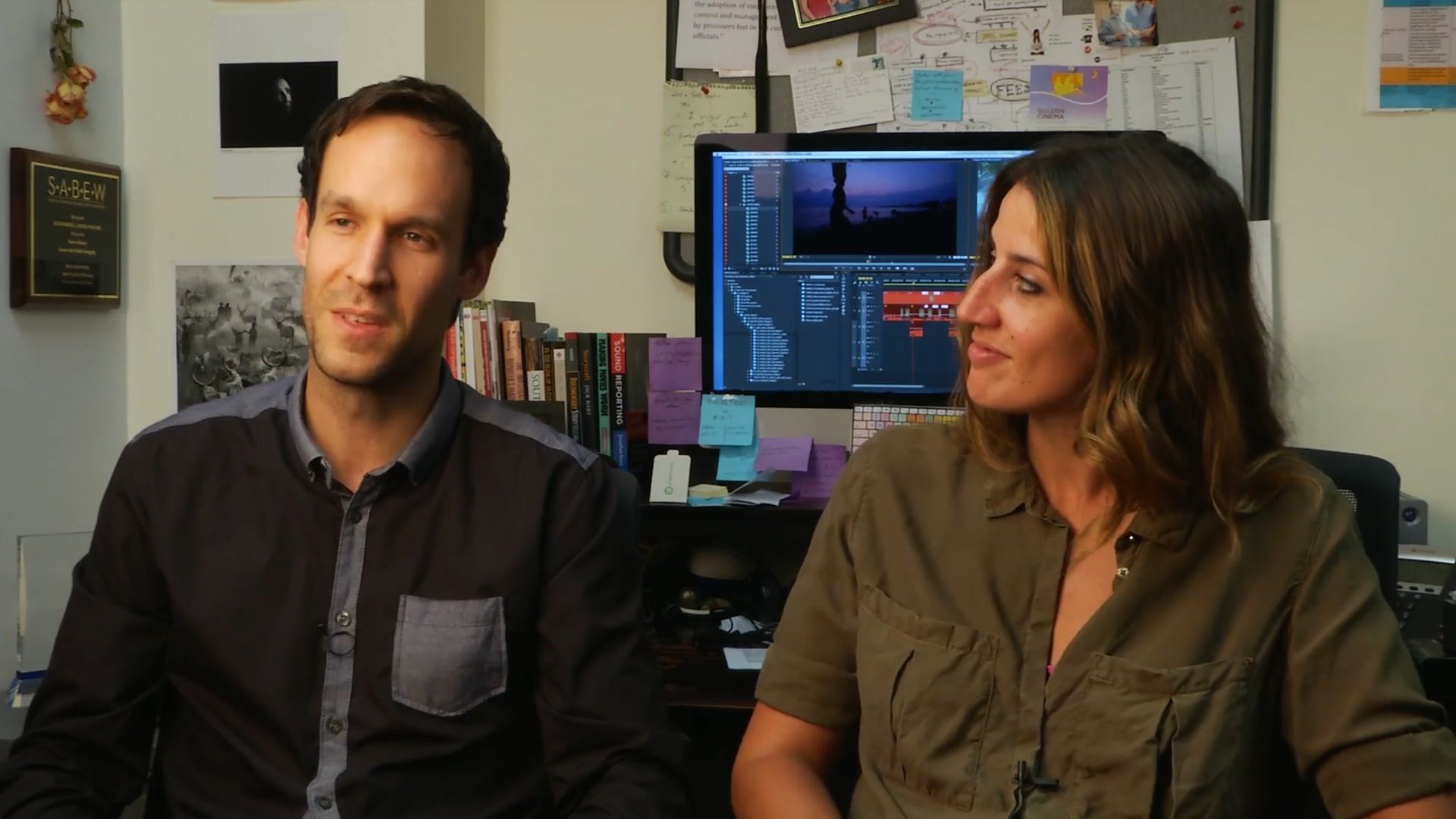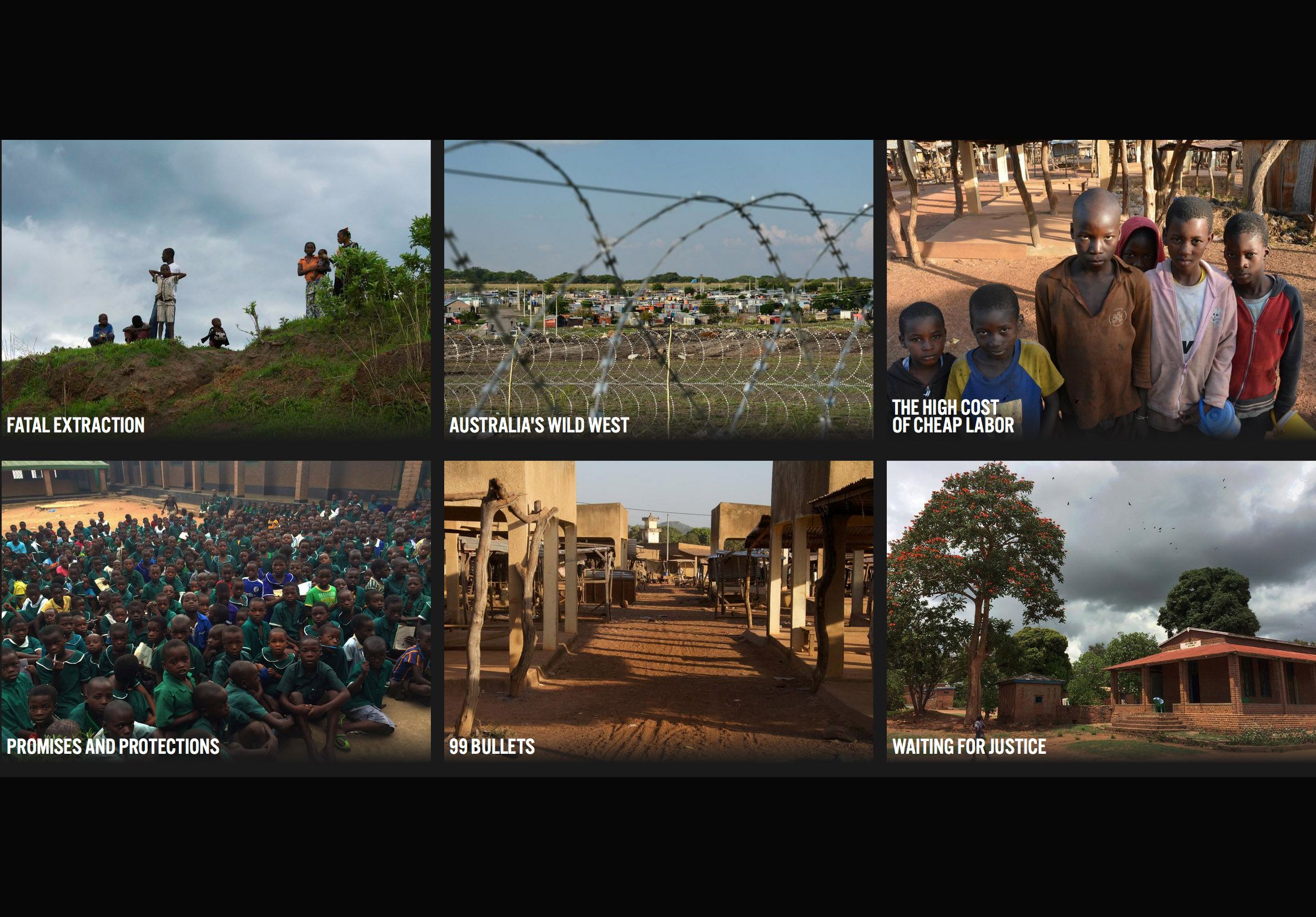Objective:
You will be able to analyze details from a multimedia presentation in order to ultilize evidence as part of an debate surrounding the roles of international mining companies in Africa
Warm-up:
Write your responses to the following questions:
- How would you define good working conditions for a job?
- Why might a company want to provide these? Why might a company not want to provide these?
- If you saw something wrong happening at work, what would you do?
Which of the following items do you use or see in your daily life? Circle the ones you use.
-
Lights
-
Toothpaste
-
Cell phone batteries
-
Rings
-
Toilets
-
Gasoline
All the items listed above use minerals that have to be mined from the ground. Many of the items above are made using minerals currently mined in Africa.
Introducing the Lesson:
1. What do you think of when you think of Australia? Make a list of at least ten things.
Most people don’t think of mining when they think of Australia, but journalists Will Fitzgibbon and Eleanor Bell discovered through their investigative project Fatal Extraction that Australia is actually the international company with the most mines in Africa today. Australian companies mine copper, gold, uranium and more.
2. Define the word investigation and write a prediction for how Will and Eleanor engaged in “investigative reporting” throughout their project. Who do you think they spoke to? What did they have to do conduct their investigation?
3. Watch the Meet the Journalist video and answer the questions attached.
In today’s lesson, you will investigate the project "Fatal Extraction" to try to understand the roles of different stakeholders in the mining process: The mining company, the government, the community, and the mine workers.
Introducing the Resource: Fatal Extraction, Australian Mining in Africa
1. Click on the link at the bottom of the attached resource to open the multimedia presentation.
2. Review slides 1-21 and answer the following questions on a separate sheet of paper:
- What was the massacre described in these slides?
- What was the role of the government? What was the role of the mining company?
- What does lawyer Patricia Feeney mean when she says “industry-facilitated massacre?”
3. Review slides 22-40 and answer the following questions:
- While meeting with schools in Washington D.C., Will Fitzgibbon described the following quotation as one of the most important parts of this reporting project: “There is a very strong perception that Australian mining companies come here to get away with things that they wouldn’t get away with in Australia.”- lawyer Tracey Davies
- What does Tracey mean by this?
- How do these slides support/not support her point?
4. Focus on slide 28 to learn more about the impacts of a mining accident in Malawi. When Will and Eleanor visited schools, they explained that Mr. Sichinga received $2,000 as compensation for his injury. What would you do if this happened to you in the United States? Write your response on a separate sheet of paper.
5. Review slides 41-52. As you review the slides, make a list of reasons the people interviewed have chosen to work in the mines.
6. Focus on slides 47-48 to hear from Norman, a worker at a mine in South Africa. Will and Eleanor explained during school visits that Norman shares his bathroom with 15 other people. He also lives right next to the mine. His home has no electricity, but the mine across the street has electricity 24 hours a day so that mining can happen both during the day and at night.
7. Review slides 53-68. As you review the slides, write your responses to the following questions:
- How does the mining company interact with the community?
- What have been some of the environmental impacts of mining in Malawi?
- How does the government official in Malawi feel about the mining companies?
8. Review slides 74-92 and write your responses to the following questions:
- How are people combatting the challenges of mining in Africa?
- What do the sources interviewed believe still needs to be done?
Introducing the Debate:
You and your classmates will now break into four groups to explore a scenario in which a mining company is potentially opening in a resource-rich country.
Each group will represent one of the following stakeholders:
- A mining company
- A mine worker
- A community member
- A government official
Once you have identified which stakeholder you will represent, work with the other members of your group to respond to the following questions:
- Do you want a mine to open? Why?
- What do you need if a mine opens? Who do you want to provide the things you have identified? (ex: a mining company may need to ask the government for the land to mine on)
Elect a representative from your group to present your analysis to the class.
With your teacher’s support, identify areas of conflict. Where does something your group wants conflict with what another group wants? Make a list of potential compromises.
Take a vote as a class: Which stakeholder do you think will end up getting most of what they want? Why?
Reflection:
(Taken from exercises facilitated at Thurgood Marshall Academy and Wilson High School in Washington D.C.)
1. Write short reflections in response to the following categories:
|
Why does this issue matter to you? |
Why does this issue matter to your community? |
Why does this issue matter to the world? |
What can you do to address this issue? |
2. Share at least one response from each category with Will, Eleanor, and the Pulitzer Center education department by emailing [email protected].
3. Share one thing you learned from this lesson with Will, Eleanor, and the Pulitzer Center education department by tweeting what your learned to @pulitzercenter with the hashtag #lessonbuilder.
Extension:
(Inspired by a discussion after Will’s presentation at The SEED School in Washington D.C.)
Option 1. Where do you see poor working conditions in your own community? What are the factors that are contributing to those poor working conditions? Write an essay comparing and contrasting what you see in your community with what you’ve learned about the conditions for the workers in Australian mines operating in Africa.
Option 2. Eleanor spoke in the “Meet the Journalist” video about the importance of combining video and reporting to create "Fatal Extraction." What media would you use to inform your community about this project? Create an advocacy campaign to raise awareness about the role that Australian mining companies are playing in Africa. Identify how you will design your campaign and which details from the the presentation will be used as part of your campaign.
This Common Core Standards-aligned lesson plan and attached educational resources introduce students to the impact of mining by Australian companies in Africa. Students explore a multimedia slideshow and use what they discover in a structured debate. The debate asks students to break into groups and represent different stakeholders involved in the construction of a mine in Africa by an international company. Students then reflect on how mining by international companies relates directly to their lives through discussion and expository writing.
CCSS.ELA-LITERACY.SL.8.4
Present claims and findings, emphasizing salient points in a focused, coherent manner with relevant evidence, sound valid reasoning, and well-chosen details; use appropriate eye contact, adequate volume, and clear pronunciation.
CCSS.ELA-LITERACY.SL.8.5
Integrate multimedia and visual displays into presentations to clarify information, strengthen claims and evidence, and add interest.
Note: Students can explore the project independently using the student instructions for guidance. However, students may need to review your classroom's debate structure before engaging in the debate portion of the lesson.
In facilitating this lesson, I found it helpful to document the major points from each group's presentation by taking notes on the white board or on a large sticky note. These notes were helpful in guiding students towards identifying where different stakeholders in mining might disagree.



